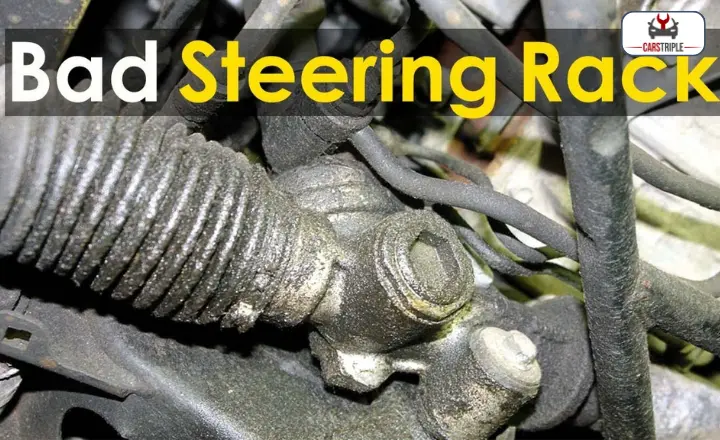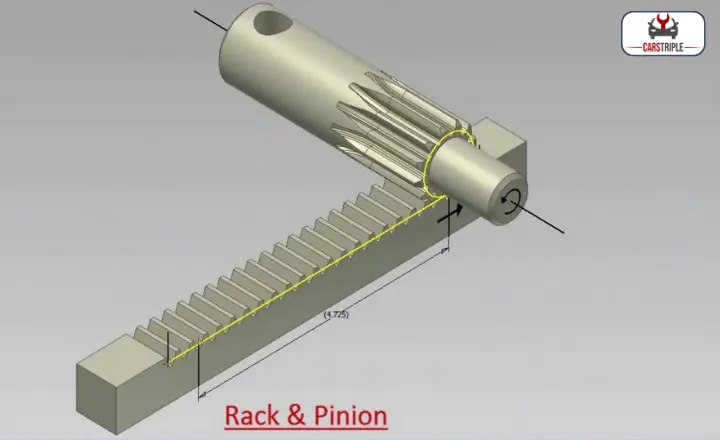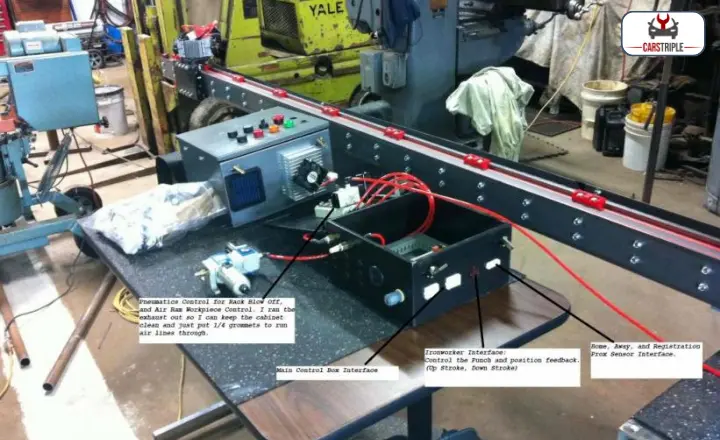A Rack and Pinion Leak is one of the most common culprits for this automotive dilemma. This seemingly small issue can cause big headaches for drivers, potentially leading to a loss of power steering and an unexpected dip in your bank account.
As you navigate the twists and turns of life behind the wheel, the last thing you want to encounter is a pesky rack and pinion leak.
This elusive automotive issue can sneak up on even the most vigilant drivers, causing a cascade of frustrating symptoms that may leave you feeling like your steering has taken on a mind of its own.
How Does A Rack And Pinion System Work?
The Rack and Pinion Leak system is a marvel of mechanical engineering that serves as the backbone of power steering in most modern vehicles. The system works by converting the rotational motion of the steering wheel into linear motion that directs the wheels to turn left or right.
The rack, a long metal bar with gear teeth along its length, is attached to the tie rods that connect to the wheels. The pinion is a small gear at the end of the steering shaft.
As you steer, the rotation of the steering wheel causes the pinion gear to turn. This action then moves the rack from side to side, thanks to their interlocking teeth.
The result is an efficient transfer of force that translates your input on the steering wheel into a directional movement for your vehicle’s front wheels.
Wear and tear or impact can cause leakages in this system over time, leading to impaired performance and potential safety hazards.
Proper maintenance and timely rack and pinion leak repair are crucial for ensuring smooth and safe driving experiences.
What Are the Signs of a Bad Rack and Pinion?

1. Difficulty In Steering
Few things are as disconcerting as experiencing difficulty steering your vehicle. It can range from slightly resisting turning the wheel to a complete inability to manoeuvre smoothly.
Signs of a bad rack and pinion include unusual noise while turning, such as clunking or knocking sounds, uneven tire wear, and leaking power steering fluid.
These signs often indicate that the inner workings of the rack and pinion are compromised, leading to difficulty in steering.
2. Noise While Turning
When you hear noise while turning your vehicle, it could indicate a bad rack and pinion. The rack and pinion are crucial components of the steering system, responsible for converting the rotational motion of the steering wheel into linear motion to turn the wheels.
If you notice clunking, grinding, or knocking sounds when turning, it could indicate worn-out or damaged rack and pinion gears.
3. Tight Steering Wheel
You’re driving down the road, and as you make a turn, you notice that the steering wheel feels unusually stiff.
This could be a sign of a bad rack and pinion, which are responsible for converting the rotation of your steering wheel into the lateral motion needed to turn your wheels.
Knowing these signs can help you address problems with your rack and pinion early on.
Regular maintenance checks and prompt attention to any changes in steering behaviour can contribute to safer driving experiences for you and those sharing the road with you.
4. Loose Steering
If you notice any signs of loose steering or suspect problems with your rack and pinion, it’s advisable to consult a professional mechanic for an inspection and necessary repairs.
Remember, early detection and maintenance can save you from larger issues.
5. Leaking Fluid
Leaking fluid is undeniably one of the most concerning car issues that seems to strike fear into the hearts of drivers. The anxiety that comes with discovering a puddle of mysterious liquid under your vehicle can be palpable, and rightly so.
The presence of leaked fluid can significantly damage your vehicle’s functionality and peace of mind. Ignoring this issue could lead to unsafe driving conditions and expensive repairs.
It’s essential for drivers to remain vigilant about checking for any leaks regularly and addressing them promptly. Recognizing these signs early can save you from potential hazards on the road while giving you peace of mind during every journey.
6. Uneven Tire Wear
Uneven tire wear is a common issue that can point to several problems with a vehicle. One of the key signs of uneven tire wear is noticeable tread depth differences across the same axle.
This can indicate issues such as improper wheel alignment, worn-out suspension components, or even problems with the steering system.
This type of wear indicates a need for immediate attention to prevent further damage to the tires and potential safety hazards on the road.
7. Vehicle Wanders
Vehicle wandering can be a nerve-wracking experience for any driver. The most common sign of a bad rack and pinion is the feeling that the vehicle is drifting or pulling to one side, especially when driving at high speeds.
This wandering sensation can make the steering feel loose and unresponsive, creating a safety hazard on the road.
Another key indicator of a faulty rack and pinion is excessive play in the steering wheel. When there’s noticeable slack in the wheel before the wheels respond, it could be a sign that the rack and pinion system is malfunctioning.
How To Test Rack And Pinion

1. Visual Inspection
Visual inspection is a crucial part of maintaining and testing rack-and-pinion systems. When performing a visual inspection, it’s important to first check for any signs of wear or damage to the rack and pinion components.
Look for cracks, corrosion, or excessive wear on the gears and teeth, as these can indicate potential problems with the system.
2. Check the Power Steering Fluid Level
Checking the power steering fluid level is an often overlooked but crucial aspect of car maintenance. Low-power steering fluid can lead to increased steering effort and potential damage to the power steering system.
To check the fluid level, locate the reservoir and ensure that the vehicle is on a flat surface.
Remove the cap and use a dipstick or inspect the level visually. Add more fluid per your vehicle’s specifications if it’s below the recommended range.
3. Check for Loose Components
When testing a rack and pinion system, one crucial step is to check for loose components. Loose components can significantly affect the system’s performance and lead to issues such as steering play and inconsistent handling.
Loose or damaged mountings can cause vibrations and erratic steering behavior, so a thorough visual inspection should ensure that all mountings are secure and free from any signs of wear or damage.
Don’t overlook the condition of bushings and related hardware; worn or damaged bushings can also lead to loose components within the rack and pinion system, affecting its overall functionality.
4. Road Test
When conducting a road test to assess the functionality of the rack and pinion, it’s crucial to pay attention to specific indicators. Start by checking for unusual vibrations or noises while steering, as these could indicate rack and pinion system issues.
By carefully analyzing these aspects during a road test, one can gain valuable insights into the condition of the rack and pinion system and address any necessary repairs or maintenance proactively.
5. Professional Inspection
A professional inspection of a vehicle’s rack and pinion system ensures optimal performance and safety.
Mechanics employ various methods to test the integrity of these components, including checking for any signs of leakage, wear, or damage.
Investing in regular inspections by skilled professionals helps prolong the lifespan of rack and pinion systems while bolstering overall driving confidence.
Conclusion
Understanding and managing rack and pinion leaks is crucial for maintaining the safety and efficiency of a vehicle’s steering system. By recognizing the signs of a leak and addressing it promptly, drivers can prevent costly repairs and potential safety hazards.
Regular maintenance, including checking for leaks and addressing them early, is essential for prolonging the lifespan of the rack and pinion system.
Consulting a professional mechanic for diagnosis and repair is recommended to ensure the issue is properly resolved.
FAQS
How can I identify a rack and pinion leak?
Look for signs of power steering fluid under your car, difficulty steering, or whining noises when turning the wheel.
How much does it cost to repair a rack and pinion leak?
Repair costs for a rack and pinion leak can vary depending on the extent of the damage, but it generally range from $300 to $1000.

